Thanksgiving, Time for a Chat About California Turkeys

The last time I walked my dog in a park near home, we encountered not one but two separate flocks of wild turkeys. Wild turkeys have spread through my region and their populations are booming. It’s increasingly common to see them marching through residential neighborhoods, standing on peoples’ fences or cars, and roosting at night in trees nearby. These are large birds, some of them as big as 20 pounds (9 kilograms), and most flocks seem to have 10-20 birds apiece.
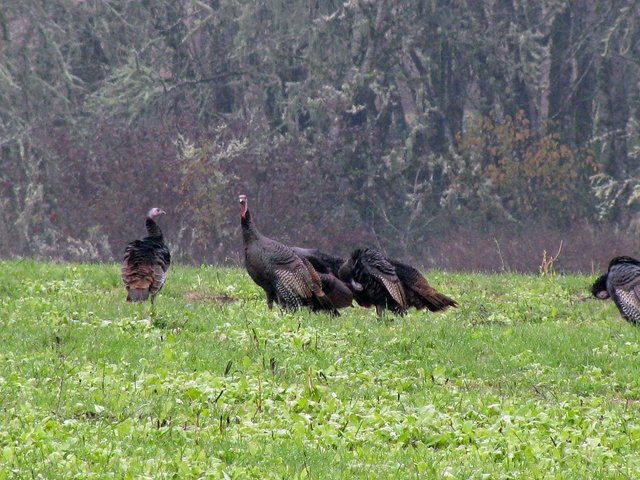
Wild Turkeys vs. Extinct Californian Turkeys
Basically, the wild turkeys have moved in and now call this place home. In my state of California and across the United States and Canada, wild turkeys are acting like they’ve been here all along. And they are native because eating turkeys is part of the Thanksgiving tradition, right? More on that in a moment.
Aside from scratching up the soil and defecating everywhere, wild turkeys do eat a lot of slugs and bugs (such as ticks) that I’d rather not have around. My neighbors haven’t tired of them yet and still like to watch and take pictures when the turkeys come through, often stopping traffic on one of the larger roads. But my dog has a different view; he classifies them as invasive creatures and routinely chases away turkeys when we pass a group of them on the street or in a park. When he gets to close to a turkey and it opens up its wings to flap, though, my dog usually backs off because he’s small enough to know he might not win that fight.
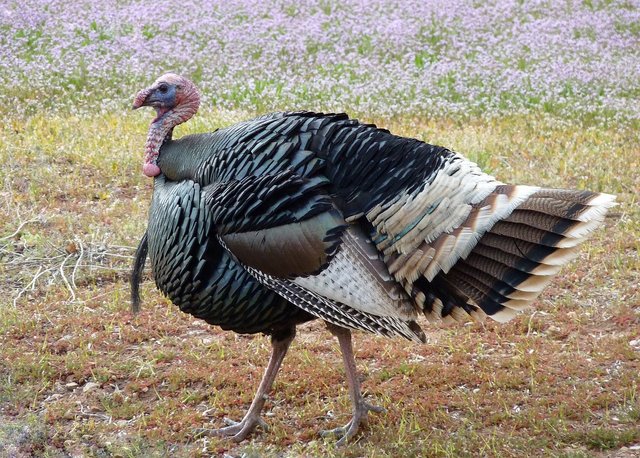
These turkeys are not native to California; they have come here from the south and from the east. California’s only species of wild turkey (appropriately called the Californian turkey) is extinct. There is a skeleton of one in the museum at the La Brea Tar Pits in Los Angeles. The ancient species was heavy with a short, wide beak. These turkeys lived in the Pleistocene and early Holocene periods, but then they disappeared. Hunting by the humans who first settled North America may well have driven them to extinction.
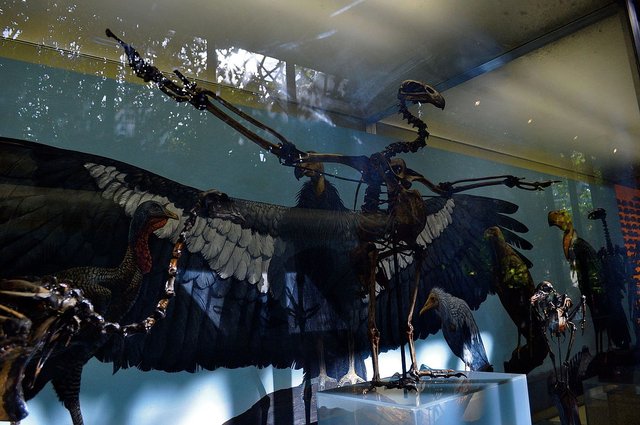
The extinct Californian turkey, a skeleton at the La Brea Tar Pits. Creative Commons via Wikimedia.com by Sarah Murray.
But don’t tell the turkeys in my neighborhood that they are not native turkeys.
Strange Relationship
Overall, Americans have a weird relationship with these birds. On the one hand, many towns and neighborhoods now play host to these wild turkeys which have spread and established populations in much of North America. Some love them and some hate them. On the other hand, I could walk from the park where I saw this flock to a supermarket, and in that supermarket they are selling turkey meat. There is whole turkey, roasted turkey, frozen turkey, and even canned dog food that includes turkey as an ingredient.
In the United States, Thanksgiving is often referred to as ‘Turkey Day’. Turkey is the centerpiece dish; many farm- or factory-raised turkeys are slaughtered each year and transported hundreds of miles so that home chefs can prepare their own delicious turkey recipes for this annual family gathering. Yet those same home chefs step outside with their cell phones to snap pictures of the flocks of “wild turkeys” that walk through their neighborhoods.
Very few would apply for a hunting license to harvest a turkey from the wild; in this state a licensed hunter who complies with regulations can harvest up to three birds during a spring season that lasts just a few weeks. I don’t think anyone hunts them in residential areas. Just like my dog says, the turkey meat from the grocery store is easier to handle.
All Turkeys Originated in Mexico
Are they really the same turkeys in both refrigerators and yards? The species is the same. Turkeys are native to the Americas, but the “wild turkeys” that also became domesticated spread through the southwest and into the eastern United States from Mexico. It was only more recently that we started seeing so many of them where I live on the west coast. The domesticated birds are bred for certain characteristics, such as being large and fat, so they probably have some differences but are the same species as the wild turkeys.
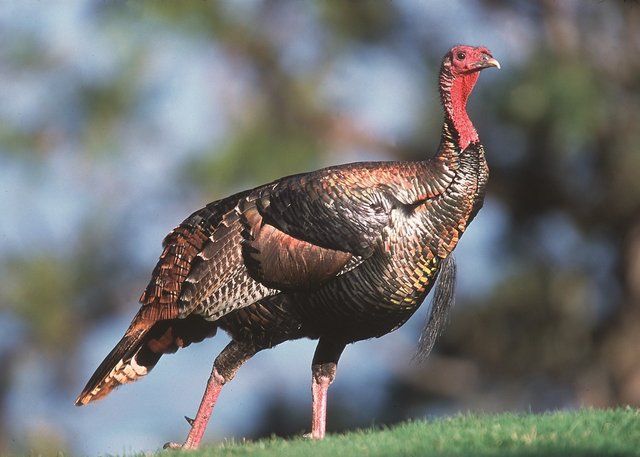
The Pleistocene fowl known as the Californian turkey went extinct a long time ago. And today, there are two species of turkey in the world. One is a jungle turkey fowl that lives in Mexico. And the other, the kind that we have domesticated and also allowed to spread as wild turkeys, actually originated in Mexico also. And their spread probably owes more to their domestication and human-assisted spread along the way than it does to a natural range expansion.
So all present day turkeys originated in central Mexico. And most are considered the same species as the domesticated turkey.
The Mayans knew turkeys and used them for meat. Turkeys were one of the earliest domesticated livestock species in the Americas. And as they were exported from Mexico to Europe and elsewhere, there must have been some confusion about their origins. Historical and literary references (including Shakespeare) referred to “turkey cocks” or “turkey hens”, perhaps believing mistakenly that these were related to guinea fowl that were brought from the country of Turkey. And over time, the name “turkey” stuck.
Turkeys and the Thanksgiving Tradition
Was turkey meat served at the first Thanksgiving? Some historians say no, but about 20 years after the first Thanksgiving harvest meal was celebrated by the early colonists who arrived from England on the Mayflower, William Bradford wrote about it in a history called Of Plymouth Plantaion. In this account, he claimed that “there was a great store of wild turkeys, of which they took many.” So turkey certainly could have been a menu item.
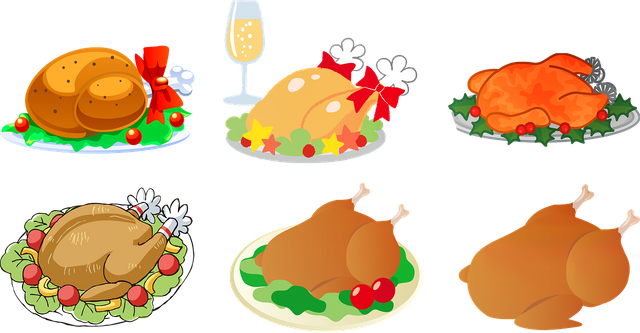
Plenty of today’s American diners will not be using traditional gravy or cranberry sauce with their Thanksgiving turkey meals, but perhaps salsa, kimchi, sauerkraut, sriracha sauce, curry, or harissa. If you go back a few generations, animals or people, then most of us would qualify as immigrants. The (only real) native California turkeys knew this, since they may well have been hunted to extinction by the first Native Americans, who arrived here from Asia via the Siberian land bridge and/or boats.
So while millions of Americans eat turkey to celebrate the Thanksgiving feast and verify their Americanness, the wild turkeys continue to strut through the neighborhoods as if they have been here even longer. And in the end, it doesn’t matter where your ancestors came from or when you arrived. For the people and animals who are here, home is home.
References:
http://mayflowerhistory.com/thanksgiving/
https://en.wikipedia.org/wiki/Turkey_(bird)
https://en.wikipedia.org/wiki/Californian_turkey
https://www.wildlife.ca.gov/hunting/upland-game-birds
Images are public domain unless otherwise indicated.
I've haven't seen any detailed post like this about turkey 🦃 for a long time now.. By the way..you have a very brave dog @donkeypong
Your dog is smart @donkeypong, dogs will never win over turkeys, they always run with their tails between their legs😂🤣
And turkeys cannot fit their tails between their legs. :)
uhuh lols
LOL!
Over here in Malaysia, we tried to adopt the culture also and eat turkey during Thanksgiving. But we use the traditional grave and cranberry sauce. It is expensive here. Per turkey roasted with the stuffing and everything cost around RM400++ means around 100sbd ++ so many will not afford it hence we substitute with roasted chicken 😋 same bird family but wayyyy smaller.
This is such an entertaining post. With valueable knowledge too. Thank you for not only supporting people but sharing awesome stuff.
Yes, I know people who do not like the taste of turkey anyway and prefer chicken.
Is it? We all love turkey. It is like THE FOOD of the year. If we get to eat, we keep the bones for next day's soup broth. Haha. See you around and take care. :)
I remember I ate one time of Turkey's meat. It too tasted me lot. But after long time never ate. Your article very educative and it's very valuable for projects finder students. I love wildlifers. Turkeys have beautiful feathers. Before you mentioned now I think Turkeys Originated min United States. But now better updated. Thanks for whole valuable blog. Resteem for see another steemians.
Hi how are you? I have never eaten turkey but I know that it is a tradition in the United States to celebrate Thanksgiving and bake a turkey, in Venezuela we do not celebrate grace, it is true that with your post you always learn not know the difference between one and another and nor that the turkeys that they consume now come from Mexico, just out of curiosity, do they know the same as those brought from Mexico to those who had before in the United States?
They live here and in other countries where they have been introduced, but the species originated in Mexico (generations ago). There are ways to verify that now, such as DNA testing.
I have to confess that coming to the US from Denmark when I came here to go to college, I had heard of turkeys, but never actually seen one. Sure, they roast turkeys in parts of Europe... but not around where I lived. Pheasant and gees? Yes. Not turkeys.
I moved to Texas and there were flocks of "wild" turkeys there... not sure how wild, but we were not far from Mexico. They could fly although they were pretty awkward flyers, but it's pretty impressive (and noise!) to have 20lbs of bird flapping wildly across the neighborhood! Used to scare the bejeezus out of the dogs, too.
That said, I didn't know that all turkeys are from Mexico... learn something new every day!
Yes, they can flap and travel for short distances (like up a fence), but mostly move by walking.
very interesting indeed. We have many wild turkeys here in Ontario, and often see flocks of them in fields. I love turkey meat, but have never hunted these birds.
The flocks here are huge and I have never seen so many of them in prior years. Often you can drive a mile down the road and there's another big group of them. It's a turkey boom.
Another year older and deeper in turkey droppings.
lol.... Jerome.
I did not know the difference between one turkey and another, neither if there are savages or not, I do not usually eat turkey I think it's because of the culture of my country, here you eat a lot of chicken, on one occasion I went to a supermarket and there were turkey legs I bought a tray with turkey thighs and went to cook them if I could notice that the meat is a bit harder but I liked how big each piece was, now I wonder where that turkey that I ate was? LOL
Greetings my friend @donkeypong
Hello my friend how are you? the truth very little is spoken of turkey in my country, they are not so common and you do not see them anywhere in the world but I have seen many movies where they celebrate the day of thanksgiving and that day only turkey, in my country it is not celebrated
I did not know what the origin of the turkeys in the United States was. I thought that they were natives from there and maybe for these thanksgiving dates they would raise the turkeys in that place @donkeypong